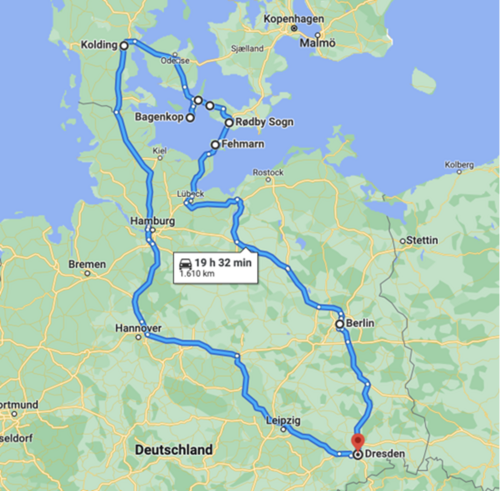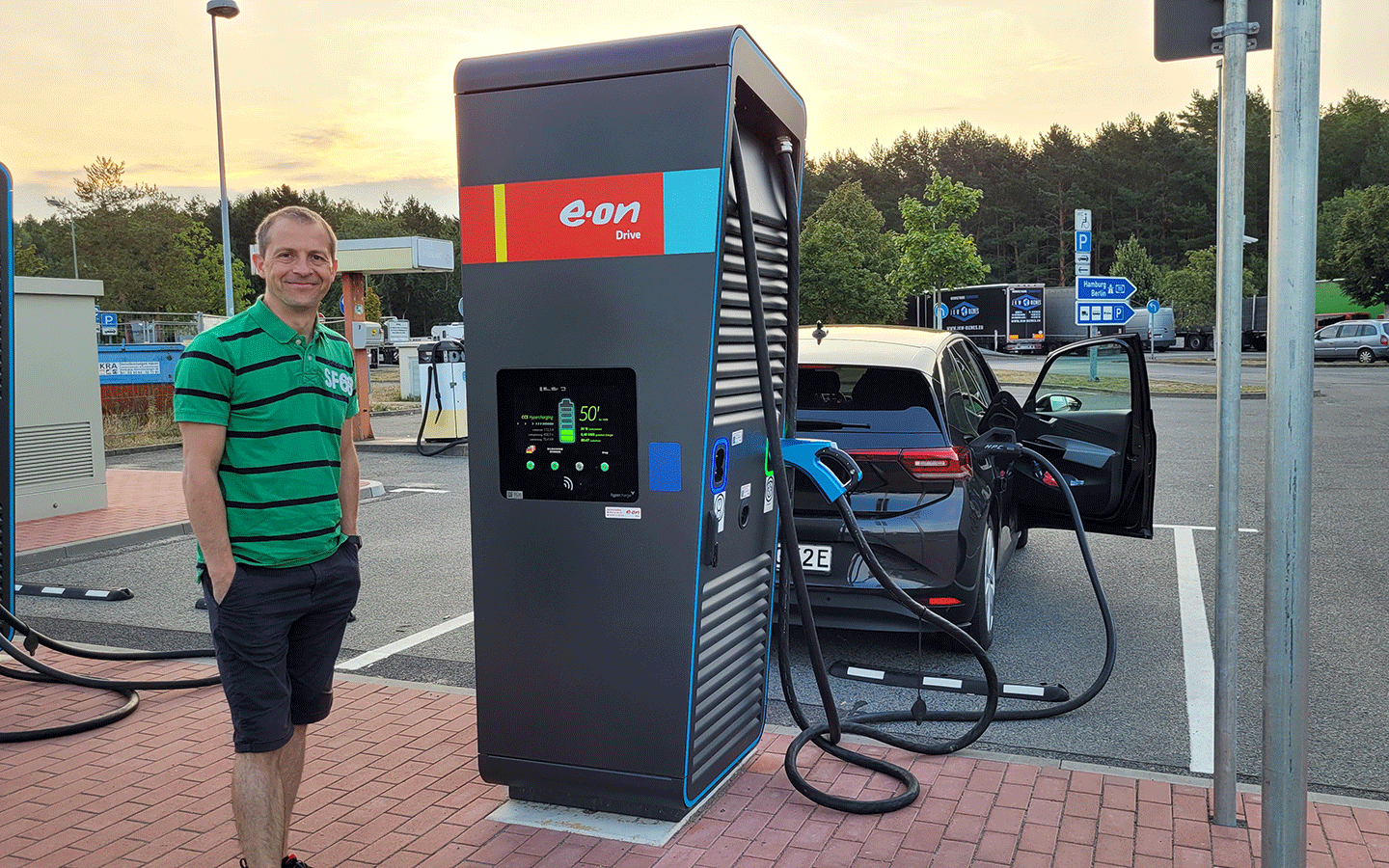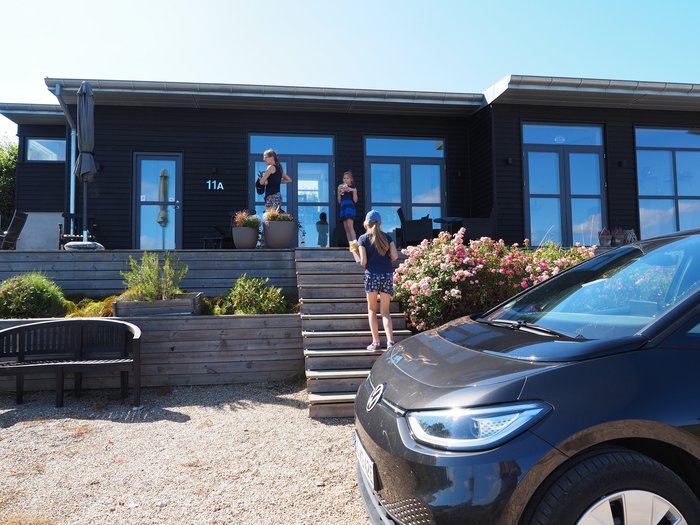A road trip with an EV? Kiwigrid's Director of Platform Development David Rabe tried it out when he went on a summer vacation to Denmark with his family in an electric company car. In total, they covered over 1,600 kilometers.
David summarized for us in a short article the challenges the trip brought with it and whether he would opt for the EV again for his next vacation.
A little experiment
For about a year and a half, David has been driving one of the first electric Kiwigrid company cars, an ID3 58-kWh with a battery range of about 300 kilometers. It is the ideal car for his day-to-day life. David charges it either at home using the surplus energy from his PV system from SOLARWATT or at the Kiwigrid office. This year, when his summer vacation was approaching and it became clear that the trip would be to Denmark, he initially didn't even consider the EV for it. Is an electric vehicle even designed for such a long trip? Is it reliable? Is the infrastructure ready for it? The numerous doubts gave way to a willingness to experiment, and David decided to embark on the journey with the EV.

The trip and its challenges
So that's how David ended up traveling to Denmark with his wife and two children in the ID3. From Berlin and Fehmarn, they took the ferry to Rødby, continued on to Tårs and Spodsbjerg, and finally reached the southern tip of Langeland in Bagenkop. This was where the accommodation for the first week was located: a cozy vacation apartment right by the harbor with its own 11 kW charging station from Clever Tanken.
In the second week, the journey continued on the mainland to a vacation home on the Little Belt, this time without its own charging station. To charge the EV, it was first necessary to drive 20 to 30 km to the larger town of Kolding. In Kolding, however, there were only a few charging stations, and they were quickly occupied. At an 11-kW charging station, the charging process could take as long as two hours. Proper charging planning was therefore built into the vacation from start to finish.
Most of the charging stations on David's route were from the providers Clever Tanken, E.ON and has.to.be, with prices ranging from 45 to 65 cents per kilowatt hour and using many different payment systems. On average, charging from 15% to 90% on the highway took about 45 minutes. In many cities, the e-mobility infrastructure proved to still be in need of development and, in some cases, was also confusing. At some locations, the number of charging spots did not match the available parking spaces, and sometimes the cable was even too short.
The peculiarities of a trip in an EV
In addition to the many challenges that a vacation with an EV brings, David also mentions clear advantages. For him, the minimalism and simplicity that an EV brings is a distinctive feature that made the entire vacation more relaxing. He describes the driving experience as pleasant and easy. The higher level of automated driving, for example, makes it easier to concentrate on conversations in the car while driving. Moreover, not having to think about the clutch and handbrake gave him a better chance to take in the surroundingss. Even the fact that the family was "only" traveling at a speed of around 130 km/h on the highway was not perceived by David as a disadvantage, but rather as a welcome slowdown. That the EV was the more sustainable choice was not only evident from the emissions saved, but also from the way it felt.
David's conclusion and a look to the future
When David decided to use the EV as a means of transportation for his vacation, he was aware that the trip would be somewhat of an experiment. The infrastructure for e-mobility is still in its early stages, and anyone embarking on a longer trip needs to both plan well and remain flexible, should the plans not work out. However, if you're up for the challenge, traveling in an EV can be great fun. In terms of price, David has hardly noticed any differences compared to a road trip with a combustion engine. However, it is important not to forget the parking disc at the charging station, otherwise it can quickly become expensive.
David enjoyed the experiment so much that he is already thinking about buying an electric bus for his family. However, he points out that the sale of more and more EVs can't be the sole solution. The surrounding infrastructure must grow with it, and complementary concepts (e.g., car sharing) are needed to enable practical and sustainable mobility in the long term.
Check out more content from our Kiwigrid team on our LinkedIn channel!

